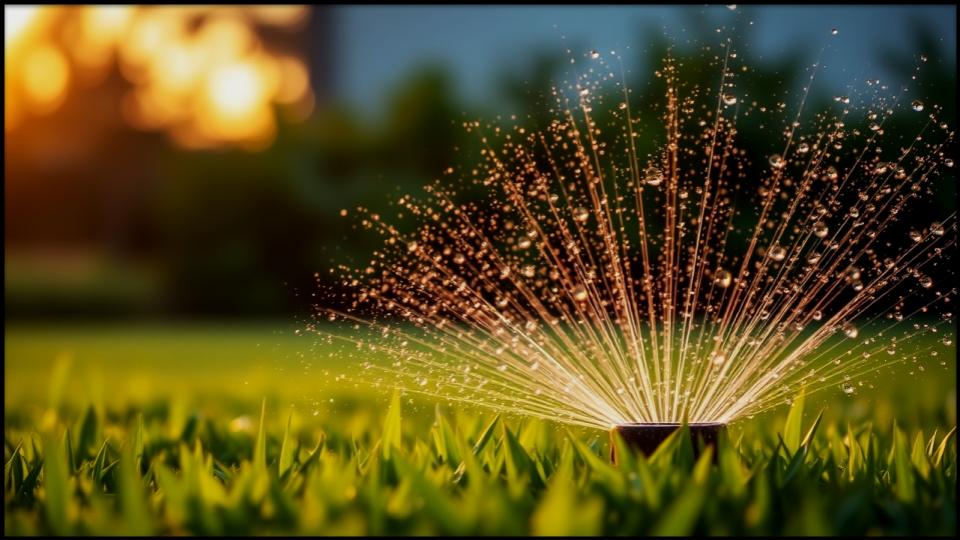
There is a certain quiet satisfaction in a truly beautiful lawn—a seamless expanse of green that invites you to walk barefoot. But an unseen menace often lurks just beneath the surface: the white grub. These voracious larvae chew through grassroots, creating unsightly brown patches and a spongy, unhealthy turf. Before you reach for harsh chemical solutions, I want to let you in on a wonderfully effective, living secret. We’re going to explore the world of beneficial nematodes, your microscopic allies in the quest for natural grub control. With the right knowledge, you can harness the power of nature to create a vibrant, resilient, and grub-free yard. Let’s begin.
Quick Tips for Success
Here are the essentials for using beneficial nematodes effectively:
- Target Wisely: For lawn grubs, the most effective species is Heterorhabditis bacteriophora (often sold as Hb nematodes).
- Timing is Everything: Apply in late summer or early fall when grubs are small and actively feeding near the surface. A spring application can also be effective.
- Create a Moist Environment: Water your lawn well before and immediately after application to help the nematodes travel into the soil.
- Avoid the Sun: Apply during the early morning, evening, or on an overcast day, as UV radiation is lethal to nematodes.
What Are Beneficial Nematodes, Really?
The word “nematode” might sound alarming, as some of their relatives are known to be garden pests. But the nematodes we’re interested in are entirely different. Think of them as the special forces of the soil ecosystem. Beneficial nematodes are microscopic, naturally occurring roundworms that are obligate parasites of insects. In my years as a horticulturist, I’ve found that gardeners are often hesitant to introduce something they can’t see, but I always assure them: these are the good guys.
They are completely harmless to people, pets, earthworms, and crucial pollinators. Their mission is singular: to hunt down specific soil-dwelling pests. They do this with remarkable efficiency. An infective juvenile nematode seeks out a host, such as a Japanese beetle grub, and enters its body. Once inside, the nematode releases a specific symbiotic bacterium. This bacterium multiplies rapidly, killing the grub within 24 to 48 hours. The nematodes then feed on the bacteria and reproduce, creating a new generation ready to seek out more grubs. It’s a targeted, self-perpetuating, and elegant solution provided by nature itself.
The Unseen Damage: Why Grubs Are a Gardener’s Nemesis
A grub problem often goes unnoticed until significant damage is done. Understanding their impact is the first step toward achieving a truly healthy lawn.

Signs of a Grub Infestation:
- Spongy Turf: In the late summer or early fall, your lawn may feel spongy underfoot. This is a classic sign that roots have been severed.
- Irregular Brown Patches: You’ll notice scattered, irregular patches of brown, dying grass that don’t revive with watering.
- Increased Animal Activity: Raccoons, skunks, and birds will begin digging up your lawn, feasting on the grubs. Their presence is often the most obvious giveaway.
Most common lawn grubs, like those of the Japanese beetle, have a one-year life cycle. The beetles lay their eggs in mid-summer, and the young grubs hatch a few weeks later, feeding voraciously through late summer and fall. This is their most destructive period and, conveniently, the best time for us to intervene with beneficial nematodes.
Choosing the Right Beneficial Nematodes for Natural Grub Control
Success with this method hinges on selecting the correct type of nematode for the job.
Not All Nematodes Are Created Equal
For the most common lawn grubs, including Japanese, Oriental, and Chafer beetles, the undisputed champion is Heterorhabditis bacteriophora (Hb). According to researchers at Colorado State University Extension, this species actively “cruises” through the soil profile in search of prey, making it more effective against deep-dwelling grubs than other species.
You can purchase these living organisms from reputable online suppliers or specialized garden centers. They typically arrive on a sponge, in a gel, or as a powder, containing millions of infective juveniles. In my own garden, I always opt for a supplier that ships with a cold pack. This small detail ensures the nematodes arrive alive and vigorous, ready for deployment.
Tools and Materials
- Beneficial Nematodes: Heterorhabditis bacteriophora (Hb)
- Hose-End Sprayer or Watering Can: A 5-gallon bucket and a watering can work for smaller areas. A hose-end sprayer is ideal for larger lawns.
- Cool Water: Use water below 86°F (30°C).
- Garden Hose & Sprinkler: For pre- and post-application watering.
How to Apply Nematodes: A Step-by-Step Guide
Applying these microscopic allies is surprisingly simple. It’s all about creating the right conditions for them to thrive.
- Time Your Application Perfectly. The ideal window is late August through September when grubs are young and vulnerable. A spring application in May can also catch overwintered grubs. The key, as advised by the University of Massachusetts Amherst, is to apply them when soil temperatures are above 60°F (15°C) and the target pests are active.
- Prepare the Lawn. Mow your grass a day or two before. Just prior to application, water the lawn thoroughly, applying about a half-inch of water. The soil should be moist, but not waterlogged. This moisture provides the pathway for the nematodes to travel.
- Mix the Solution. Following the package directions, mix your nematodes in a bucket of cool, clean water. A common mistake I see is not agitating the mixture enough before and during application. The nematodes can settle at the bottom, so stir frequently to keep them evenly suspended.
- Apply Evenly. Do this in the very early morning or, my preferred time, at dusk. Nematodes are extremely sensitive to UV light and can be killed within minutes in direct sun. If using a watering can, simply sprinkle the solution evenly over the target area. For a hose-end sprayer, pour the nematode concentrate into the jar and spray until it’s gone, moving in a steady, even pattern across the lawn.
- Water Them In. This is the most critical step. Immediately after you finish applying the solution, water the lawn again with about a quarter-inch of water. This washes the nematodes off the grass blades and down into the soil where they can get to work.
Nurturing Your Microscopic Allies
Your job isn’t quite done once the application is finished. For the nematodes to establish themselves, you must keep the soil consistently moist (but not saturated) for at least one to two weeks after application. This might mean light, frequent watering if you don’t receive any rain.
Patience is a virtue in gardening, and it’s essential here. You won’t see results overnight as you might with a chemical pesticide. Instead, you will notice a gradual improvement. The spongy areas will firm up, and the following season, you’ll be greeted by a more resilient and uniformly healthy lawn. By using beneficial nematodes, you’re not just treating a symptom; you’re strengthening your yard’s entire ecosystem.

An Elegant and Enduring Solution
Embracing beneficial nematodes is about more than just eliminating a pest; it’s about shifting your mindset toward a more holistic and sustainable approach to gardening. You are choosing to work with nature, not against it, fostering a balanced environment from the soil up. By introducing these microscopic allies, you’re not just achieving natural grub control—you’re cultivating a truly healthy lawn that will be the envy of the neighborhood for years to come. Now you are equipped with the knowledge to deploy this elegant secret weapon with confidence and watch your lawn thrive.
Read More
How to Prune a Peach Tree for Maximum Fruit—Arborists Reveal the Secret Steps
